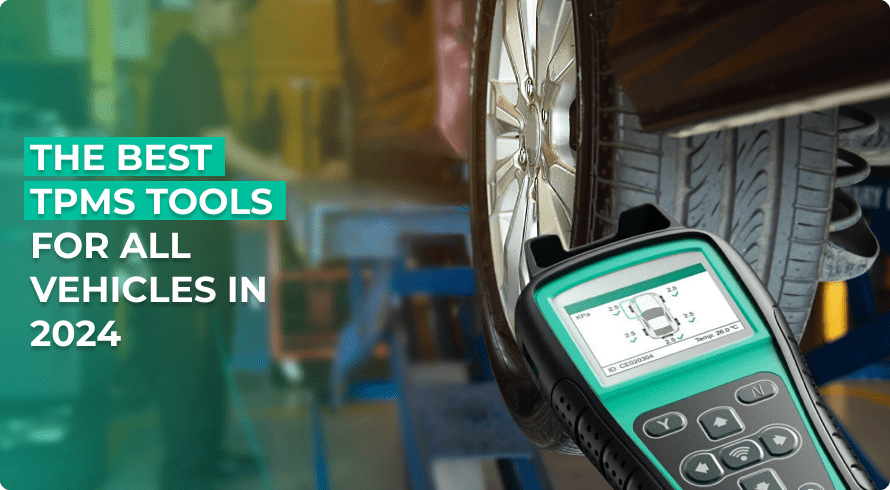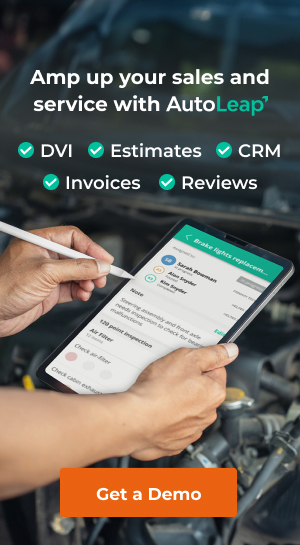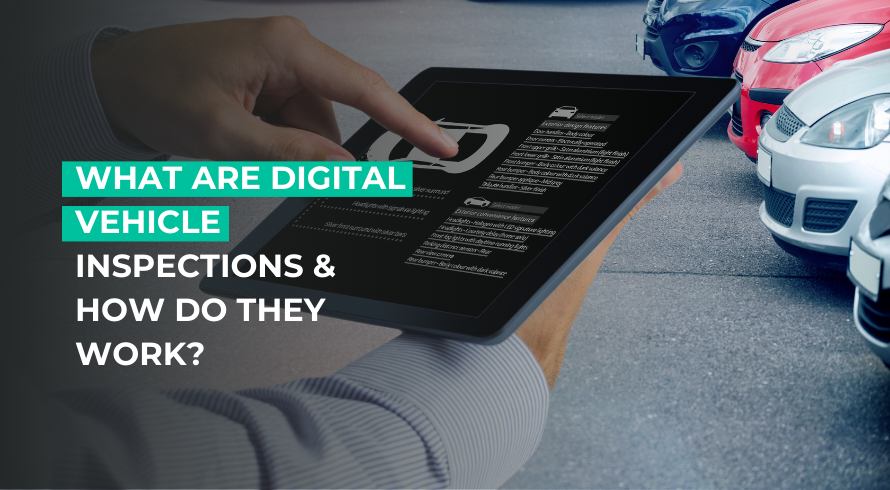As an auto mechanic, you face a common challenge. You must keep your customers’ tires in tip-top shape for better car performance and safety. Maintaining the correct tire pressure is critical, but it can be challenging.
That’s where Tire Pressure Monitoring System (TPMS) tools come in! The best TPMS tools help your mechanics streamline their efficiency when determining and fixing issues with tire pressure.
We’re breaking down the best TPMS tools that make your job easier. Let’s dive in!
Unlock powerful tools to manage your shop. Get the full AutoLeap experience today.
What is a TPMS tool?
According to Bartec TPMS, a TPMS tool is a device used to track and manage the air pressure of tires on vehicles. Its primary function is to ensure that tires are inflated. This promotes optimal:
- Vehicle performance
- Safety
- Fuel efficiency
These tools interact with the TPMS installed in a vehicle. This alerts drivers when tire pressure falls below or exceeds the recommended levels. TPMS tools help auto mechanics diagnose, troubleshoot, and address tire pressure issues.
Now, let’s cut to the chase. We will break down our shop recommendations for the top five TPMS tools.
Top 5 TPMS tools for your auto repair shop
1. VXDAS TPMS Relearn Tool
Meet the VXDAS TPMS relearn tool. The size EL-50448 is your go-to gadget for tire pressure management in GM vehicles. So it works great with Chevy, Cadillac, Buick, and Opel. Because this tool works with diverse vehicle brands, it’s an excellent addition to your shop.
This tool is perfect for tasks like:
- Swapping out tire pressure sensors
- Silencing those tire pressure alarms
- Handling tire changes like a pro
Ensure your customer’s vehicle is in TPMS learning mode for optimal use. This brand prides itself on its precision, accuracy, and durability. A simple 9V battery powers it. But heads up, it’s not ideal for massive trucks with more than four tires or vehicles with an external TPMS system. That is one of the only limitations.
User reviews
Now, let’s talk about user reviews. Customers love this tool’s simplicity. Many describe it as ‘easy to use.’ They find it also works great with one set of rims and tires. But, it might tap out on fixing error messages, and some users found the instructions confusing.
Price
This is budget-friendly at around $8.99. Overall, it’s excellent for reprogramming tires in your auto repair shop without breaking the bank.
Comparison to other tools
Other brands have similar features and costs. For instance, JDIAG also manufactures the EL-50448 TPMS Relearn tool. Arozk does as well, with that tool costing around $8.99 too. But JDIAG is near the $7.99 mark. Both offer the same features and similar limitations as the VXDAS.
Both Arozk and JDIAG have great reviews as well. Users have expressed their satisfaction with the value these tools provide. But for Arozk, some users noted it took them a couple of tries to use the tool right.
2. Autel TPMS Relearn Tool TS408
Next up, we have the Autel TS408. This TPMS relearn scanner is not just a tool but your tire pressure BFF. It’s powered by a built-in rechargeable battery. That way, you won’t have to keep buying batteries.
The Autel TS408 has got your back, whether you’re:
- Relearning sensor IDs
- Resetting sensors for your summer-to-winter tire switch
- Keeping tabs on tire pressure
It can trigger and decode sensors. Before diving into TLC, it will tell you about the ID, pressure, tire temperature, and voltage.
It also gives you real-time updates on the tire condition. This ensures your customers hit the road with the correct pressure. This tool is a team player, supporting various makes and models.
User reviews
Now, let’s talk about user reviews.
Easy to use? Check. Some limitations? Yep, it’s only covering some years and models. Some customers reported it didn’t work for their Toyota Camry Hybrid. The interface? Pretty good, but be ready for a learning curve. Tech support? It’s a mixed bag. Some say it’s meh, while others love the tech support.
Price
The price tag is steep. It stands tall at around $149. But depending on your shop’s budget, the tool’s lineup of advanced diagnostic features could make for a worthwhile investment.
3. Autel TPMS Relearn Tool TS501
Now, let’s talk about the Autel TS501. This option is an upgraded version of the TS408. It can diagnose the newer models up to 2020.
And here’s the best part: it lets you copy from OBD to replace those faulty sensors that might not be functioning. And guess what? It comes with lifetime free updates, keeping you in sync with the latest car models.
But that’s not all! This popular tool gives you a one-step TPMS health check. Need to decode some TPMS DTCs or check the key FOB? The TS501 has got it covered. This was not possible with the TS408.
User reviews
What are the customers saying about the Autel TS501? “Good price, right tool,” one reviewer notes. “Great quality, super easy to use,” says another user. And if that’s not enough, customer support gets plenty of shoutouts for being on top of things.
Price
Now, let’s get to the dollars and cents. This tool comes in around the $200 mark. That makes it more expensive than its previous version, the TS408. But the convenience it delivers your auto technicians is worth every penny.
4. JDIAG TPMS Relearn Tool (for F-150)
Do you have a flood of Ford F-150 Series trucks rolling into your shop? The JDIAG TPMS relearn tool works magic on these models but also plays nice with Mazda, Lincoln, and Mercury vehicles.
Specifically, this tool can:
- Train tire sensors
- Swap out winter and summer tires
- Fix up tire sensor casualties
- Shut down the TPMS warning light
And here’s the best part! It’s portable and waterproof.
User reviews
So, what are the customers saying about the JDIAG TPMS Relearn Tool for the F-150 Series? They’re not holding back. “Well worth it for the convenience,” one user declares. Some love how it’s a breeze to use during a snow tire swap, while others call it a charm that works wonders. Quick and efficient? You bet! One reviewer even mentions how it trained sensors and cleared faults in five minutes.
Price
Now, the price tag. It’s around $13. For all the convenience, magic, and efficiency packed into this gem, it’s a steal.
Whether you’re a seasoned auto pro or just dipping your toes in the tire service game, this shop investment is well worth it.
5. JDIAG 2in1 TPMS Relearn Tool
We reviewed the JDIAG EL-50448, which works excellently with GM vehicles. And we also covered the Relearn Tool for F-150 series models. Let’s discuss the 2in1 TPMS Relearn Tool for GM and Ford vehicles.
First, the positives. This tool features a simple and fast response system. That functionality awakens the TPMS sensor within one minute. As you will see, many users in online reviews swear by its quality! Additionally, this tool comes from a reputable brand that many mechanics and shops trust.
Next, let’s address a few downsides. It has limitations similar to those of the VXDAS EL-50448. This tool can’t support heavy trucks with more than four tires. And it can’t work with an external TPMS system, either. Oh, and remember to pack a fresh 9V battery for this option.
Let’s check in on what specific users think.
User reviews
So, do the customers love it? Some mentioned difficulties with the instructions. But once they cracked the code, it was smooth sailing. One user even said, “Works great if you read instructions.”
Price
It’s a tad pricier at around $16 compared to other models of the same brand. But it’s a 2in1 wonder that plays nice with a whole fleet of vehicles. So, for a tool that’s got your back with both GM and Ford rides, it’s a small investment that pays off big time. Auto shop essential? You bet!

Benefits of using a TPMS tool in auto repair shops
Now that we know which TPMS tools are worth investing in, let’s consider some shop efficiencies they can create for you. More Sensor outlined some benefits of using a TPMS tool in auto repair shops for your auto mechanics.
Time-saving diagnostics
TPMS tools provide real-time readings of tire pressure. This allows your mechanics to diagnose and address tire issues.
Every minute counts and that added efficiency will reduce their time on manual inspections. This means faster service, more streamlined repairs, and a turnaround time that customers will appreciate!
Enhanced safety
Inflated tires are crucial for vehicle safety. TPMS tools help your mechanics identify and resolve underinflation or overinflation issues. This reduces the risk of tire blowouts, accidents, and other safety hazards on the road.
Improved fuel efficiency
Well-maintained tire pressure contributes to better fuel efficiency for your shop’s customers. TPMS tools assist in keeping tires at optimal pressure levels. This means vehicles consume fuel more efficiently and produce fewer emissions.
Reduced wear and tear
Maintaining proper tire pressure reduces unnecessary wear and tear on tires. By using TPMS tools, your mechanics can ensure that tires wear evenly. This increases their lifespan and reduces the frequency of customer replacements.
TPMS tools also offer alerts and notifications for tire pressure irregularities. This helps mechanics address potential problems before they escalate.
This proactive approach to maintenance helps prevent more significant issues. Your customers will value your genuine care for their vehicle’s long-term condition.
Customer satisfaction
Customers appreciate it when their vehicles are serviced on time. TPMS tools can contribute to a positive customer experience, as your mechanics can better maintain the health and safety of their cars.
Combine all these benefits, and you get increased efficiencies for your auto repair shop and cost savings for vehicle owners. This creates a win-win situation for all parties involved!
Types of TPMS tools
There are different types of TPMS tools, each serving specific purposes. Studying the differences will help you choose the one that aligns with your shop’s needs.
Handheld devices
Portable and user-friendly, handheld TPMS tools are suitable for basic diagnostic tasks. They are convenient for quick checks and simple tire pressure readings.
Take one of the tools we previously reviewed. The JDIAG TPMS Relearn Tool for F-150 series vehicles is portable. When buying a portable TPMS tool, ensure it is compatible with the cars you work on in your auto shop.
Integrated systems
More advanced systems are integrated into the shop’s equipment. These offer comprehensive diagnostic capabilities. These may include features like sensor programming and system resets. Think of the Autel TS501 and Autel TS408, which we discussed above.
Alerts and reminders
Look for TPMS tools that provide comprehensive alerts and reminders. These features keep your mechanics informed about tire pressure irregularities and maintenance schedules.
Proactive notifications ensure timely action! This prevents potential issues before they impact vehicle safety and performance.
Types of sensors
Understanding the types of sensors a TPMS tool supports is essential. Different vehicles may use external, internal, or universal sensors. Digoptions explains the difference between external and internal sensors.
External sensors
These sensors are mounted on the exterior of the tire valve stem. They are visible and easily accessible, simplifying installation and replacement.
Internal sensors
Concealed within the tire, internal sensors are hidden from view. They provide a more streamlined appearance. But they may require more effort to install and replace.
Universal sensors
Lambda Geeks explains universal sensors. These are adaptable to various vehicles. This means flexibility in your inventory management. They are a versatile option for auto repair shops dealing with multiple vehicle types.
TPMS tools can program or reprogram TPMS sensors. This feature is useful when replacing or servicing sensors.
TPMS battery sensor
Consider the TPMS tool’s capability to check sensor battery levels. A TPMS tool that can assess and report sensor battery health is excellent. It helps the sensors remain functional and reliable.
Autel and JDIAG both design TPMS tools. These can train sensors, fix tire sensor casualties, and reset sensors when needed. Opt for a tool that helps prevent unexpected sensor failures or faulty sensors. This will extend the lifespan of the TPMS system.
Ease of use
Choose a TPMS tool with an intuitive and user-friendly interface. Mechanics of varying skill levels should find the tool easy to navigate. Look for tools with transparent displays, straightforward menus, and ergonomic designs.
An easy-to-use TPMS tool will enhance the overall efficiency of your shop. It will also minimize the learning curve for techs who haven’t used the tool.
According to many online reviewers, the Autel TS501 and TS408 are easy to use in this manner. On the flip side, some customers said the instructions for the JDIAG 2in1 TPMS relearn tool were complicated. Ensure your shop checks out reviews by fellow customers to see what they say about the tool’s functionality.
Compatibility
Ensure that the TPMS tool is compatible with a wide range of vehicles. Compatibility extends to the make and model of the vehicles serviced in your shop. A versatile TPMS tool will work with many makes and models, enhancing its utility and cost-effectiveness.
Take this example. If you only work with GM vehicles, you can opt for the TPMS tool that is compatible with that brand. EL-50448 by VXDAS is a good fit for that. If your shop works on F-150 series vehicles, you can use the JDIAG TPMS tool. Select the TPMS tools that align with the most common vehicles stopping by your shop.
After addressing tire pressure issues, TPMS tools can reset the system in a vehicle. That will clear any warning lights or alerts on the dashboard.
Consider the specific features and functionalities that align with your shop’s requirements. This will contribute to efficient tire maintenance practices and enhanced customer satisfaction.
Installation & maintenance of a TPMS tool
Here are some critical aspects of installation and maintenance:
Power source
Ensure the tool is connected to a stable power source. This could be through:
- The vehicle’s OBD-II port
- A built-in rechargeable battery
- An external power supply
Also, remember to check and recharge batteries regularly. This will help you avoid unexpected shutdowns during use, which takes up precious time your shop can’t afford to waste.
Software updates
Stay updated with the latest software releases from the tool’s manufacturer. Periodic updates often include improvements, bug fixes, and compatibility enhancements. Follow the provided instructions to update the tool’s software for optimal performance.
Calibration
Calibrate the TPMS tool as per the manufacturer’s recommendations. Calibration ensures accurate readings and reliable performance. Some tools may need calibration before each use or after a certain period.
Troubleshooting solutions for TPMS tools
According to Tire Grades, you can experience the following issues with TPMS tools. Let’s dive into a few troubleshooting situations and how you can address them.
Connectivity
Ensure that the TPMS tool is connected. Check the OBD-II cable and connectors for any damage. If using a standalone device, confirm Bluetooth or Wi-Fi connectivity. Restart the tool and try reconnecting.
Incorrect readings
At times, the TPMS tool might provide inaccurate tire pressure readings. Your techs can check if the sensors are calibrated and compatible with the tool. Verify that the vehicle’s tire pressure is within the recommended range. Recalibrate the tool if necessary, and ensure it is up-to-date with the latest software.
Power problems
Check the battery status and recharge or replace batteries if your TPMS tool loses power. Ensure a stable connection if it is connected to the vehicle’s power. Inspect power cables for damage and replace them if necessary.
Interference
External interference or electronic signals can affect the TPMS tool’s performance. If this happens, move the tool away from sources of interference. Nearby electronic devices or strong radio frequency signals may cause these issues. Avoid conducting TPMS operations in areas with these considerations.
Contact the TPMS tool manufacturer’s technical support if you can’t resolve the issues. They can provide specific guidance, updates, or even replacements if necessary.
Wrapping up
There are a wide range of available TPMS tools, each with unique features. These tools streamline tire maintenance in your shop, enhance safety, boost customer satisfaction, and play a vital role in efficient tire care.
We hope this comprehensive guide helps you choose the TPMS tool that best suits your auto repair shop’s needs for customer tire service.
If you’re looking for an all-in-one solution to managing your tire shop, AutoLeap’s tire shop software is the ultimate solution.
FAQs
Are TPMS relearn tools universal?
TPMS relearn tools are not universal. They are individually designed for specific makes and models.
Can you program TPMS sensors yourself?
Yes, you can program TPMS sensors yourself using a compatible TPMS tool.
What TPMS tool can program all sensors?
Not all TPMS tools can program all sensors. The compatibility will vary between models and manufacturers.
How often does the best TPMS tool need to be calibrated?
The calibration frequency for the best TPMS tools depends on the specific tool and its usage. Follow the manufacturer’s guidelines for precise calibrations.







